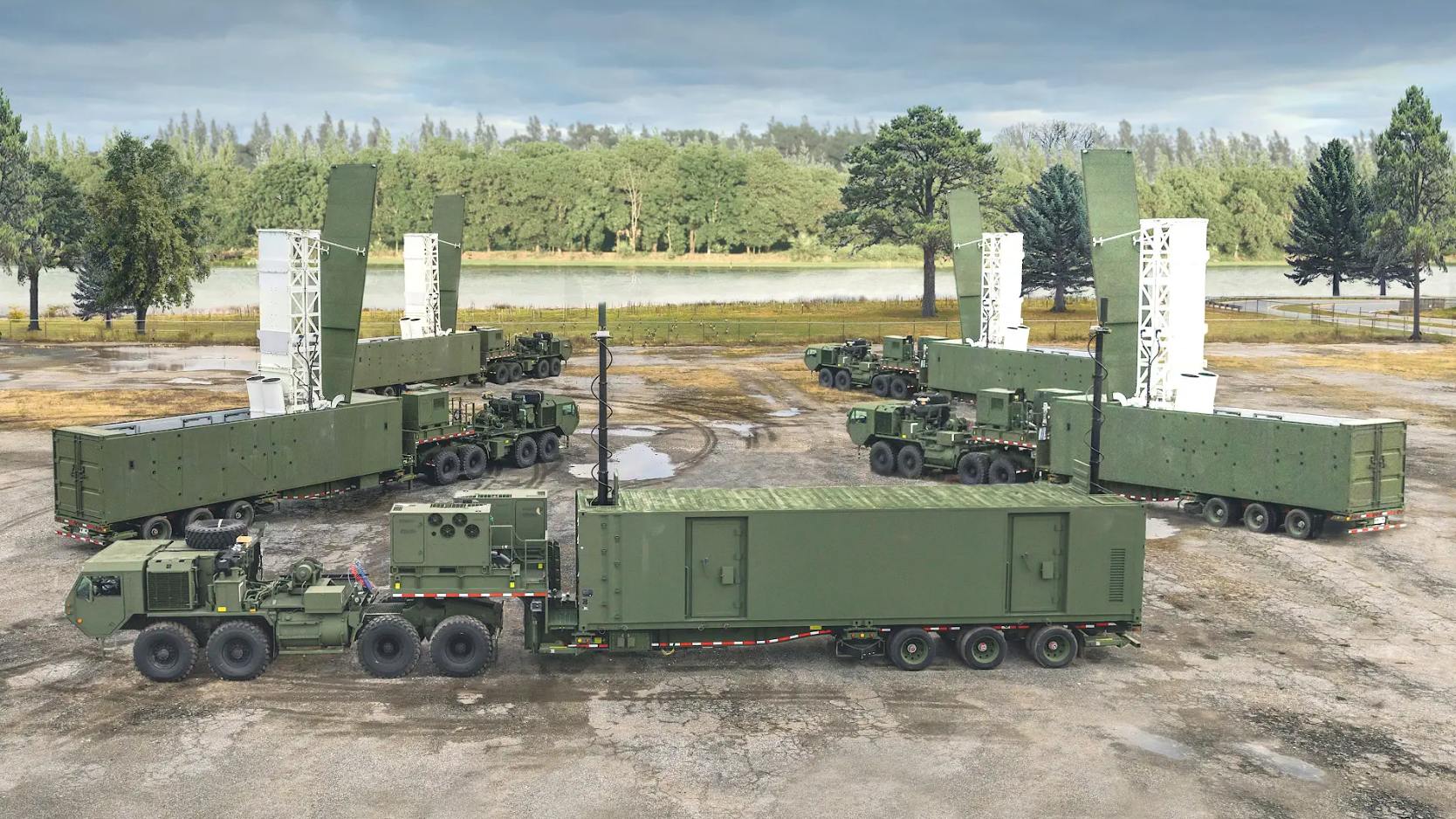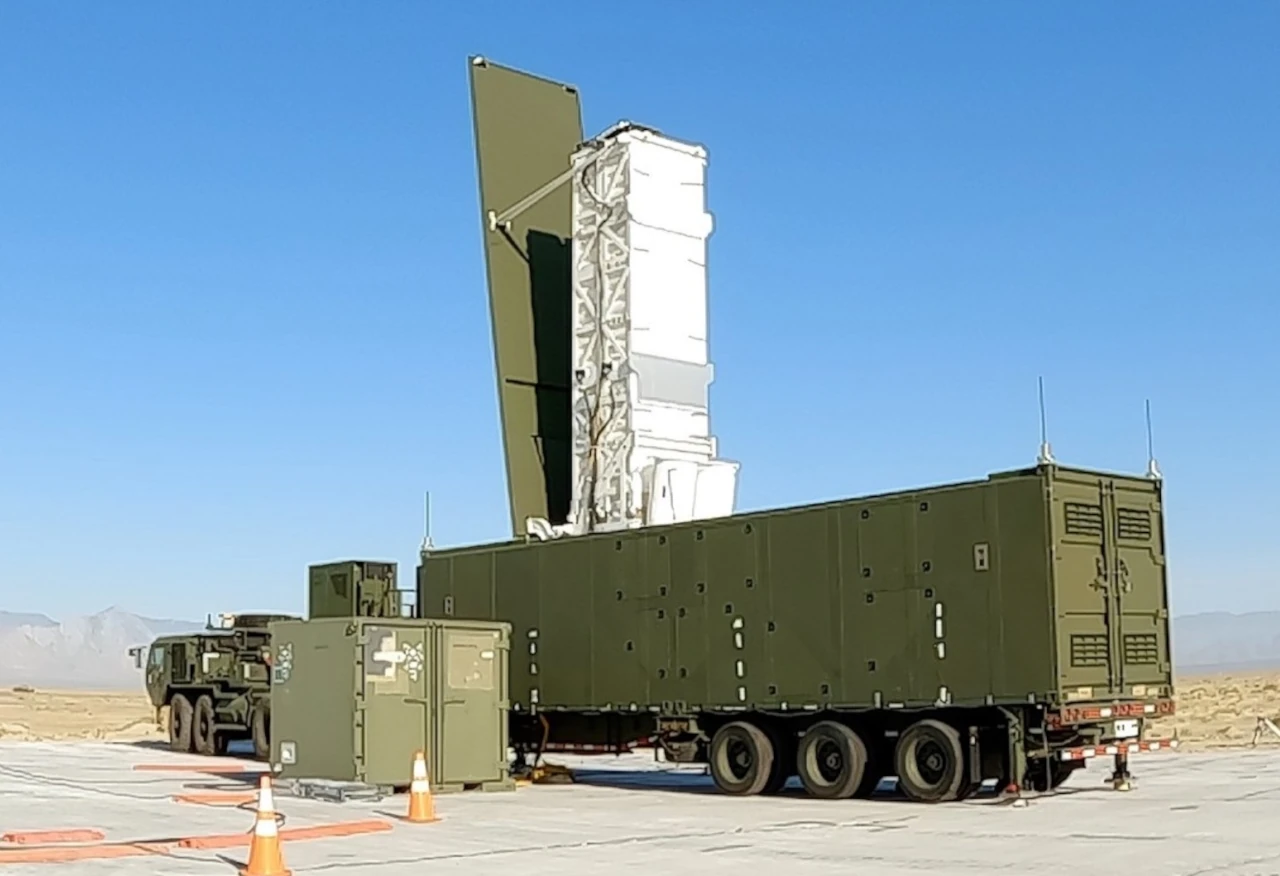More than six months after it was first delivered by Lockheed Martin, the US Army’s newest ground-based missile launcher, known as the Typhon Weapon System, successfully fired a Tomahawk land-attack cruise missile.
‘Naval Peer’ Of 6th-Gen Fighter, UK Gives A Sneak Peak Into Anti-Hypersonic & Laser-Firing Type 83 Warship
The announcement was made by Rapid Capabilities and Critical Technologies Office (RCCTO), which stated that the Soldiers from the 1st Multi-Domain Task Force and the US Navy Program Executive Office Unmanned Aviation and Strike Weapons collaborated to successfully demonstrate the launch of a Tomahawk missile from the Army’s prototype Mid-Range Capability system on June 27, 2023.
In this live-fire exercise, soldiers launched a Tomahawk missile after successful communication from the Battery Operations Center to the launcher. This test comes after the Mid-Range Capability system’s successful launch of an SM-6 missile earlier this year, which established the system’s full operational capacity.
In early December, media reports indicated that Lockheed Martin had delivered one of the first of four prototype Typhon Mid-Range Capability (MRC) weapon systems to the US Army. The ground-based launcher has been developed as part of the service’s launch-drawn efforts to bolster long-range precision fire capabilities.
In a brief statement published one day after the test, RCCTO stated, “This test follows the successful launch of an SM-6 missile from the Mid-Range Capability system earlier this year, confirming the full operational capability of the system.”
Earlier this year, the system test-launched a ship-launched Standard Missile-6 (SM-6) from the Typhon weapon system. The new test launch using the Tomahawk missile aligns with the service’s goal of achieving some level of operational capability with the first MRC battery before the end of the fiscal year 2023 in September this year.
The Army anticipates that Typhon will largely be used against land-based targets using either Tomahawk or the SM-6 missile. While the Tomahawk has some anti-ship utility, the SM-6’s Block-1A variant possesses limited land and sea target attack potential.

The SM-6 was first created as a surface-to-air missile, but it also has anti-ship capabilities that have been tested, and versions with substantially longer ranges and other improvements are currently being developed.
EurAsian Times reported in September 2022 that the United States Navy (USN) “rehearsed” operating its ship-launched Standard Missile-6 (SM-6) from road-mobile launchers under the US European Command. The rehearsal was done as part of the Typhon system and showed containers on articulated trucks claimed to be carrying the SM-6.
With the successful demonstration of Typhon’s entire expected operational capacity, the recent Tomahawk test launch is a significant step forward in the Army’s plans to launch a variety of new long-range strike capabilities.
The Navy is the lead service responsible for managing the US military’s Tomahawk and SM-6 missile programs. The Army and Navy have been collaborating with the Marines as they acquire their ground-based Tomahawk capability.
Marcia Holmes, deputy director of the US Army’s Rapid Capabilities and Critical Technologies Office (RCCTO), said at a conference in September 2021: “By maintaining commonality with the Navy, we can capitalize on modernization efforts, on investment strategies, across a multi-service Mid-Range Capability program to include joint test events…the Navy and the Marine Corps.”
The firing of the SM-6 with a land-based launcher is more significant since, despite having limited to no ability to engage an incoming hypersonic target, the US military has asserted that the SM-6 may be the only family of missiles at its disposal that could likely engage a highly maneuverable hypersonic weapon.
Typhon Mid-Range Capability Weapon System
The MRC/”Typhon” missile being developed by the US Army will bridge the gap in mid-range capability between the 482-kilometer range of the Precision Strike Missile (PrSM) and the 2776-kilometer range of the Long-Range Hypersonic Weapon (LRHW). In other words, it requires missiles to reach targets up to 1,800 km away.
“The MRC rapidly progressed from a blank piece of paper in July 2020 to the soldiers’ hands in just over two years. The [Rapid Capabilities and Critical Technologies Office] team, as well as our joint service and industry partners, delivered this hardware so soldiers can begin training as quickly as possible,” said Lt. Gen. Robert Rasch, a senior official overseeing the weapon’s development at RCCTO in December last year.

In November 2020, the Army chose Lockheed to construct the weapon system. Earlier in 2022, the service and the manufacturer indicated that four prototypes would be delivered by the end of that same year.
According to information the Army had previously provided, a full Typhon Weapon System battery comprises four launchers, a command post, and reload and support vehicles, all on trailers. Offboard sources are used to supply the targeting information.
Additionally, the Mk 41 Vertical Launch System (VLS) used by several US Navy and other warships served as a model for the Typhon launchers. Currently, a large variety of containerized missiles can be fired from this launcher, and other types may be added later.
Typhon also includes a fire control system adapted from the combat-proven Aegis Combat System and the launchers built on the Mk 41 platform. The Navy has tested the Mk 70 Expeditionary Launcher, a containerized launcher based on the Mk 41 and very close to the Typhon concept.
With Tomahawk at its disposal, Typhon gives the Army a new weapon that enables it to hold land-based targets at risk within a bubble that may be created that stretches around 1,000 miles in all directions from the location of the launchers. The SM-6’s shorter range increases the overall system’s versatility.
In any potential higher-end confrontation, especially against China, the US military wants more choices for hitting targets on land, at sea, and in the air throughout the enormous expanses of the Indo-Pacific area.
Concerns about the potential impact of Russian and Chinese artillery on US combat operations and ground combat systems have returned due to Russia’s and China’s improved longer-ranged artillery systems, new employment techniques leveraging unmanned aerial vehicles (UAV) for target acquisition, and the proliferation of special munitions like precision, thermobaric, loitering, and top-attack.
As already mentioned, the capability of Tomahawk and SM-6 to engage different target types suggests that an MRC battery may one day be equipped with greater anti-access/aerial denial functionality.
- Contact the author at sakshi.tiwari9555(at)gmail.com
- Follow EurAsian Times on Google News




